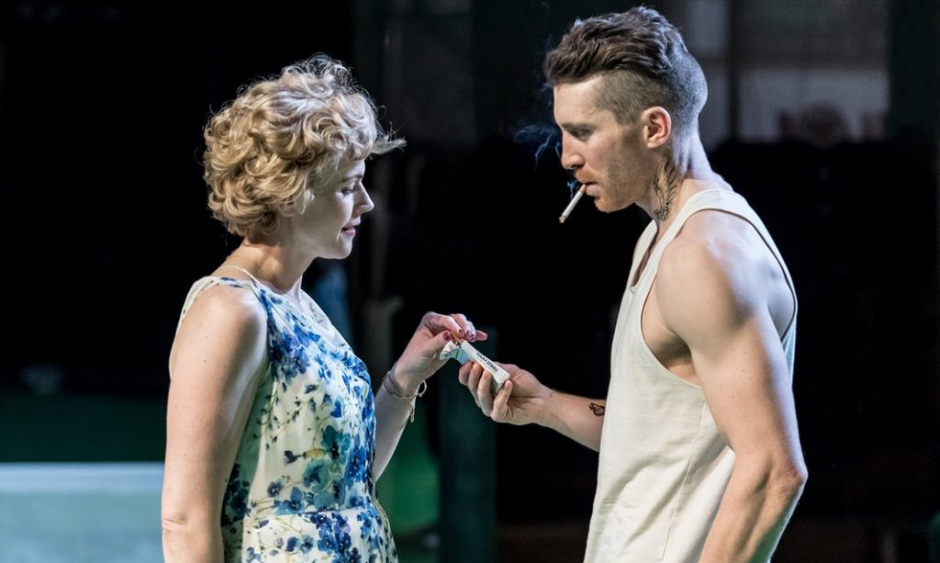A Streetcar Named Desire, The Royal Exchange, September 8 2016; directed by Sarah Frankcom.
In Tennessee Williams’ 1947 play, a Southern belle, Blanche DuBois (Maxine Peake), is forced to move into the small and squalid New Orleans home of her sister, Stella Kowalski (Sharon Duncan-Brewster), and brother-in-law, Stanley Kowalski (Ben Batt) after losing her family home to debt collectors. Blanche’s mental health is already suffering when the play begins and continues to deteriorate as the play progresses and details of Blanche’s life come to light, despite her attempts to conceal and escape them. The story maps Blanche’s mental decline against the backdrop of racial and class tension, domestic violence, and non-normative sexualities.
Sarah Frankcom’s production is at once true to the original text while providing its own fresh perspective on it, doing well to avoid being stylistically influenced by earlier film adaptations. The script remains almost entirely unchanged from Williams’ rich and, at times, lyrical dialogue; however Frankcom’s set makes for a serious departure from the extensive descriptions put forward in the original text. Where Williams describes poverty and squalor in close detail, Frankcom and designer Fly Davis choose a more minimal approach; the set (reminiscent of Tracey Emin’s My Bed (1998) opening today at the Tate Liverpool) comprises two dishevelled mattresses, littered with clothes and empty bottles, a small refrigerator covered in bottle tops, and a bathtub behind a glass screen. Coupled with the dim lighting, the smoky atmosphere, and the fact that the front rows of the audience encroach upon the set like high-density housing, the Kowalski’s financial and material conditions are conveyed with perfect clarity.
Though strongly acted by the entire cast, Maxine Peake stands out in a league of her own. Blanche’s character gives Peake the scope to showcase the breadth of her ability, from coy flirtation to hysterical fear. Whether playing opposite another character or delivering one of Blanche’s long monologues, Peake is consistently gripping and commands attention even when playing a minor role in the scene. Ben Batt also deserves special mention for his performance in which he managed to capture the aggressive masculinity and physicality of the character, while displaying the emotional subtleties that arise from his insecurites. Though his performance is mostly brutal and intimidating, he does nonetheless manage to portray the sexual and seductive elements of Stanley’s character thanks, in no small part, to Duncan-Brewster who ably and convincingly describes and enacts Stella’s problematic attraction and devotion to Stanley.
Frankcom makes explicitly clear in the final scene that this production, above all else, is about Blanche and her attempts to cope and come to terms with her declining mental condition. Blanche delivers her famous final line beneath intensely lit spotlights to a stage that has been emptied of all the other characters and props, stripping Blanche of all hiding places and finishing on a moment of vulnerability, clarity, and honesty. The stage is then descended into blackness Frankcom omits Stanley’s efforts to console Stella and Steve’s attempt to continue a card game, and the stage is turned to black. The audience is given no distraction, and Blanche’s words are heard with devastating clarity.
Frankcom plays to the strengths of her talented cast to produce a performance of A Streetcar Named Desire that is affecting and compelling; it is a faithful reproduction of Williams’ original that feels devastatingly relatable.

